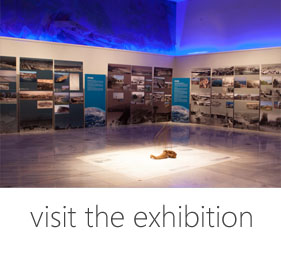Name
ChrysoupolisCurrent Name
Ancient Name
EionMedieval Name
ChrysoupolisHistory of the name
Place :
Country
GreeceGeopolitical Unit
MacedoniaAdministrative subdivision
Prefecture of Kavala, Municipality of PaggaionLocation
South of the national road connecting Thessaloniki and Kavala, in a short distance from the Strymonas river delta.Foudation Date
The existence of byzantine Chrysoupolis is dated to the 9th-10th century.Current condition
Today it is an archaeological site open to the public.History
Chrysoupolis seems to have succeeded the early Christian city of Amphipolis, located a bit to the North which was ceased, as recorded to the written sources since the 7th century. The archaeological remnants indicate that Chrysoupolis was founded in the mid-Byzantine period and was an important settlement in the area, where most commercial activities of the Strymonas Valley were gathered. The same period was also a commercially active port.
During the 14th century it played an important role which is why Andronikos III Palaiologos included it to the positions he wanted to fortify. In 1357, the emperor Ioannis E' Palaiologos, granted the settlement to the brothers Alexios and Ioannis, who had earlier taken it over from the Serbs. Around 1380, Chrysoupolis is taken over by the Ottomans without losing its importance as a commercial center and a station on the way from Thessaloniki to Constantinople.
In the 16th century, although its name is still being referred to, the city seems to be abandoned, but there was still activity in the harbor area although it didn't have any permanent residents.
In the 18th-19th centuries a new bloom of the financial and trading activities of the area is being recorded.
Description
A few parts of the fortification of the byzantine city have been preserved, but they are sufficient enough to give us an image of the outline of its walls.
Harbor
The harbor of the city was the reason for its blooming especially during the late byzantine period. It seems like the port facilities kept being used even after the settlement had been abandoned. In the 18th - 19th century, according to travelers’' descriptions, there used to exist a small port with the name Tsai-gezi, west to the old Strymonas river bed. There has been no excavation made in the area and no traces of the harbor of Chrysoupolis are being preserved.
Fortification
The fortification of Chrisoupolis includes two enclosures which cover an area of about 25 and 65 hectares respectively and they form an acropolis in the center. The western wall is the oldest and it is the one that demarcated the centers of religious and social authorities of the settlement.
In a second phase, the city expanded with the creation of a second enclosure to the East which was enhanced with tall square towers.
The castle is considered a 14th century piece of work and it is connected to Andronikos III, but there are five different masonries on the walls which indicate the continuous and longterm interest for the fortification and the protection of the city.
Medieval Sites
The whole castle is an archaeological site open to visitors.
Textual Sources
Bibliography
• ΑΔ
• Dunn Α., "The survey of Khrysoypolis and Byzantine fortifications in the lower Strymon Valley", JΟB 32 (1982), 606-614.
• Dunn Α., The Byzantine Topography of Southeastern Macedonia: A contribution, Μνήμη Δ. Λαζαρίδη, Πόλις και Χώρα στην αρχαία Μακεδονία και Θράκη, Πρακτικά Αρχαιολογικού Συνεδρίου (Καβάλα, 9 -11 Μαΐου 1986), Θεσσαλονίκη 1990, σ. 327 – 329.
• Ευγενίδου Δ., Κάστρα Μακεδονίας και Θράκης. Βυζαντινή Καστροκτισία, Αθήνα 2003, σ.86 – 88.
• Καραγιάννη Φ., Οι βυζαντινοί οικισμοί στη Μακεδονία μέσα από τα αρχαιολογικά δεδομένα (4ος-15ος αιώνας),Θεσσαλονίκη 2010, σ.141.
• Lemerle P., Philippes et la Macedoine Orientale a l'epoque chretienne et byzantine, Παρίσι 1945, σ. 264 – 265.
• Τσούρης Κ., Νεάπολις – Χριστούπολις- Καβάλα. Διορθώσεις – Προσθήκες – Παρατηρήσεις στην οχύρωση και την ύδρευση, ΑΔ 53 (1998), Μέρος Α’, Μελέτες, σ.447 - 448.
Links
http://odysseus.culture.gr/h/3/gh351.jsp?obj_id=5926

























